Few herbs are as refreshing, versatile, and easy to grow as mint (Mentha spp.). Whether you’re adding it to iced tea, cocktails, salads, or desserts, having fresh mint on hand is a game-changer in the kitchen. But if you’ve ever grown mint outdoors, you know it has a reputation for being invasive—spreading rapidly through underground runners until it takes over entire garden beds.
The good news? You can grow mint indoors, where it’s not only convenient but also much easier to keep under control. With the right care and setup, you’ll enjoy a steady supply of fragrant mint leaves without worrying about it overrunning your space.
This guide will walk you through everything you need to know to grow mint indoors successfully—from choosing the right container and soil to managing its growth and keeping your plant healthy year-round.
Why Grow Mint Indoors?
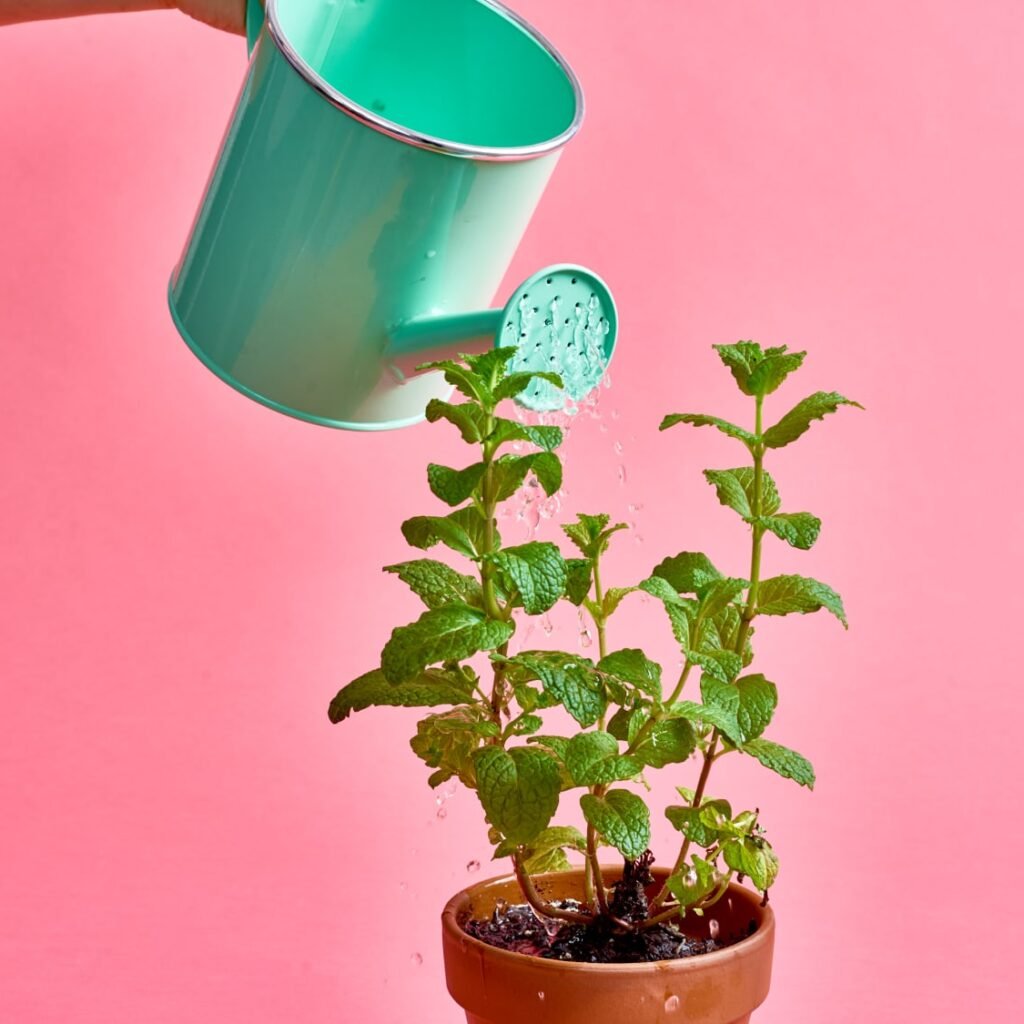
Mint is often considered a beginner-friendly herb, but indoors it offers even more advantages:
- Convenience: Fresh sprigs are always just a snip away.
- Controlled growth: Indoors, you can contain mint’s tendency to spread aggressively.
- Year-round harvest: You’re not limited by outdoor growing seasons.
- Fragrance: Mint adds a fresh, clean aroma to your kitchen or living room.
- Pest control: Unlike outdoor mint, which can attract insects, indoor mint faces fewer pest problems.
If you’ve avoided mint in your garden because of its invasive nature, growing it indoors is the perfect solution.
Choosing the Right Mint Variety
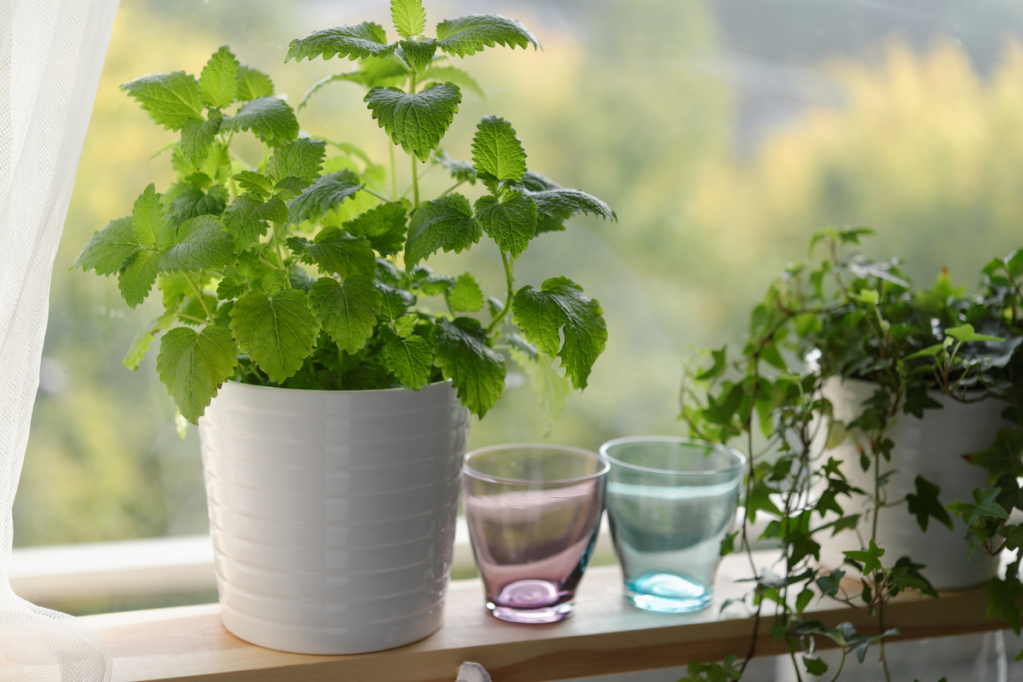
There are over 600 varieties of mint, each with subtle differences in flavor and growth. Popular choices for indoor growing include:
- Spearmint (Mentha spicata): Classic mild mint flavor, great for teas and cooking.
- Peppermint (Mentha × piperita): Strong, cooling flavor, ideal for desserts and drinks.
- Chocolate Mint: A sweet, chocolatey undertone that pairs well with desserts.
- Apple Mint: Mild, fruity flavor with fuzzy leaves.
- Pineapple Mint: A variegated variety with attractive green and white leaves.
For indoor growing, spearmint and peppermint are the most common, but adventurous gardeners may enjoy experimenting with the flavored varieties.
The Secret to Growing Mint Indoors Without It Taking Over: Containers
The key to controlling mint indoors is container gardening. Mint spreads aggressively when planted in the ground, but in a pot, its growth is contained.
- Pot size: Start with a container that is at least 8–10 inches deep and wide. Mint grows quickly and needs room for its roots.
- Material: Terracotta or ceramic pots work well, but plastic containers retain moisture better (important since mint likes consistent moisture).
- Drainage: Ensure the pot has drainage holes to prevent soggy roots.
- Placement: Place a saucer under the pot to catch extra water, but don’t let the plant sit in standing water.
If you want to grow multiple mint varieties, keep them in separate pots. Otherwise, they may cross-pollinate and muddle flavors.
Light Requirements
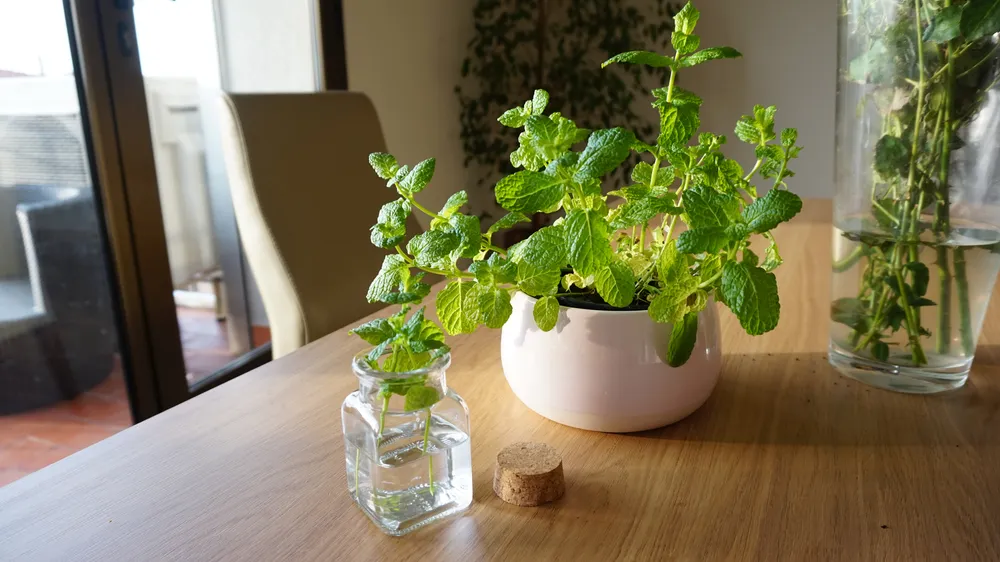
Mint grows best in bright, indirect light, though it can tolerate a bit of direct morning sun.
- Windows: A south- or west-facing window works well.
- Grow lights: If your home doesn’t get enough sunlight, use a full-spectrum grow light for 10–12 hours daily.
- Rotation: Turn the pot every week so the plant grows evenly and doesn’t lean toward the light.
Too little light will make mint leggy, with small, pale leaves.
Soil and Potting Mix
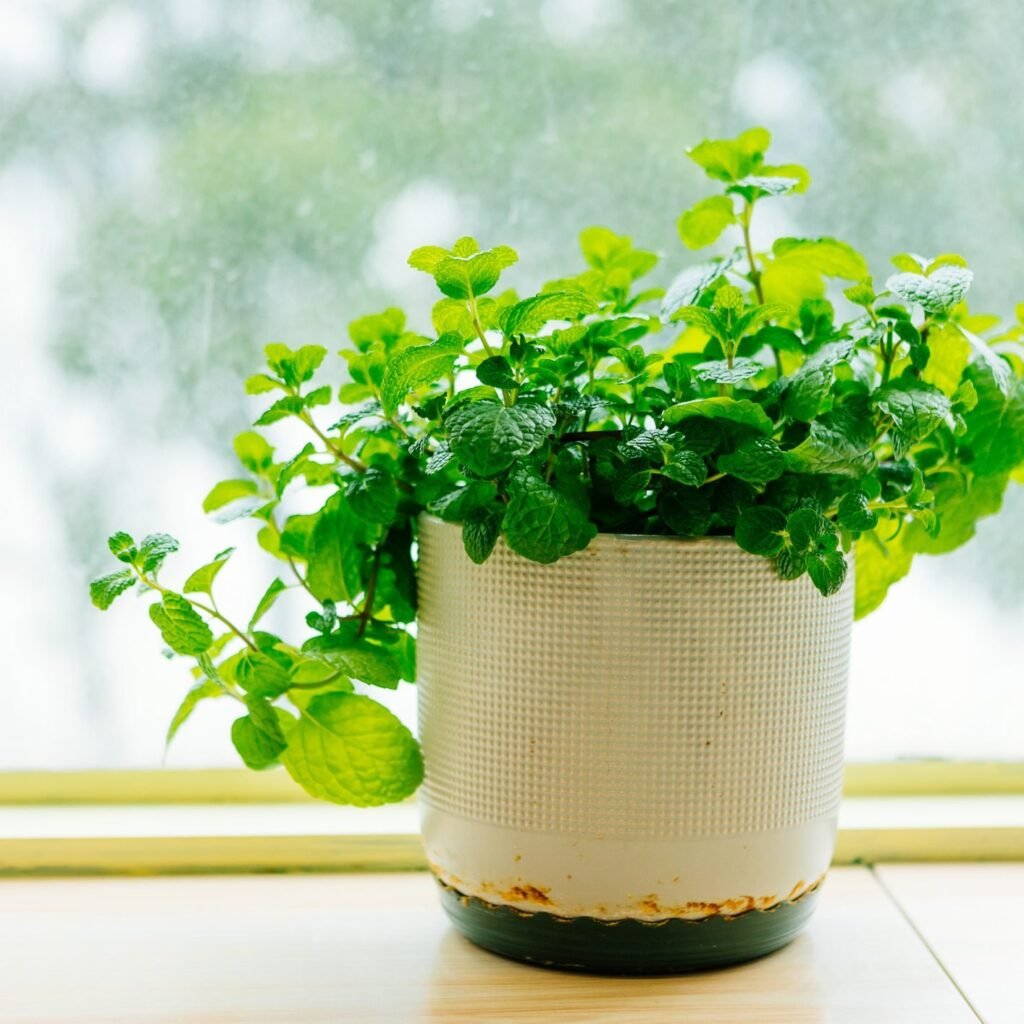
Mint likes soil that retains moisture but still drains well.
- Best mix: Use a high-quality all-purpose potting mix with added perlite for drainage.
- pH preference: Mint prefers slightly acidic to neutral soil (pH 6.0–7.0).
- Repotting: Mint grows quickly, so you may need to repot every year to refresh the soil and give roots more room.
Watering Mint Indoors
Mint loves water but hates soggy conditions—a balance that many growers struggle with.
- Check moisture: Stick your finger 1 inch into the soil. If it feels dry, water thoroughly.
- Consistency: Mint prefers consistently moist soil but not waterlogged conditions.
- Humidity: Mint appreciates average indoor humidity but can tolerate slightly dry air better than fussier herbs like basil.
Tip: During winter, when indoor air is drier, mist your mint occasionally or place it near a humidifier.
Fertilizing Mint
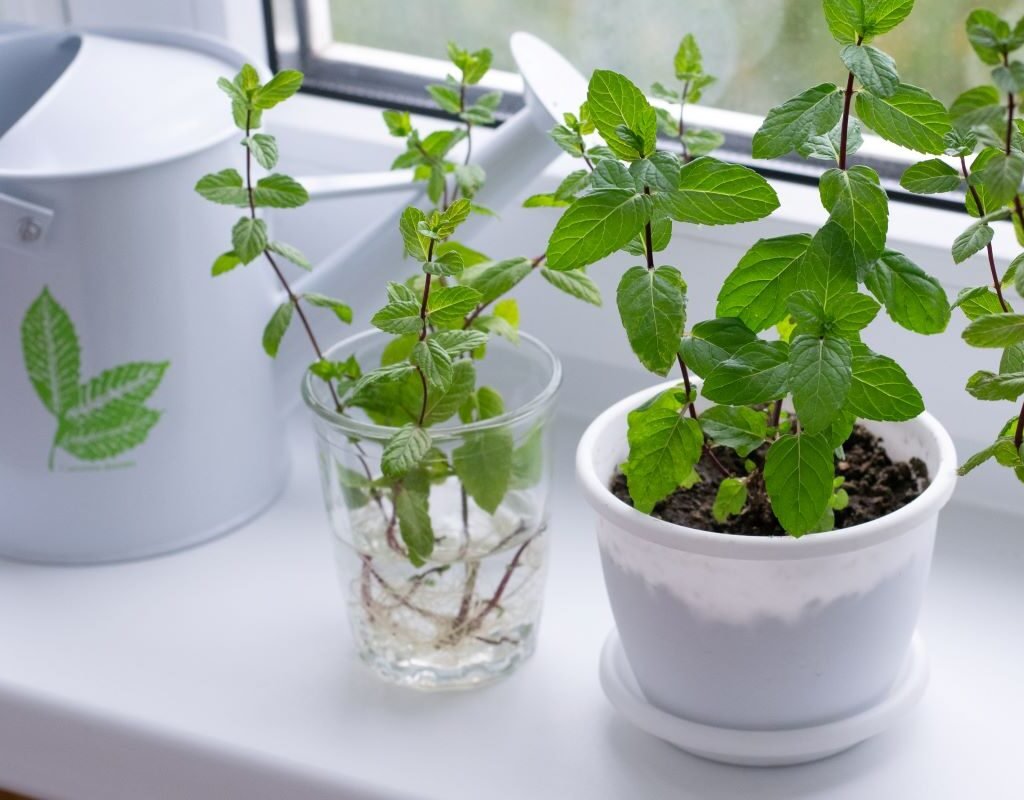
Mint is a relatively fast-growing herb that benefits from regular feeding, especially when grown indoors in containers.
- Type: Use a balanced, water-soluble fertilizer (like 10-10-10).
- Frequency: Fertilize once every 4–6 weeks during the growing season.
- Alternative: Organic options such as compost tea or fish emulsion also work well.
Don’t over-fertilize, as too much nitrogen can make leaves less flavorful.
Pruning and Harvesting Mint
Pruning is one of the best ways to keep mint under control indoors while encouraging lush growth.
- Harvest often: Regularly pinch or cut stems just above a leaf node. This encourages the plant to branch and grow bushier.
- Don’t over-harvest: Never remove more than one-third of the plant at once.
- Revive legginess: If your mint gets too leggy, cut it back by half to encourage fresh growth.
By pruning regularly, you prevent mint from getting unruly indoors while ensuring a constant supply of fresh leaves.
Propagating Mint
One of the joys of growing mint indoors is how easy it is to propagate and share.
- Stem cuttings: Snip a 4–6 inch cutting just below a node. Remove lower leaves and place the cutting in water until roots form. Then, transfer to soil.
- Division: When repotting, divide the root ball into smaller sections and pot separately.
Mint propagation ensures you always have backup plants in case one declines.
Common Problems with Indoor Mint
Even indoors, mint can face a few challenges. Here’s how to troubleshoot:
- Leggy growth
- Cause: Not enough light.
- Fix: Move closer to a sunny window or add a grow light.
- Yellowing leaves
- Cause: Overwatering or poor drainage.
- Fix: Let soil dry slightly between waterings; ensure drainage holes are clear.
- Pests (aphids, spider mites, whiteflies)
- Cause: Indoor dry air or nearby infested plants.
- Fix: Rinse leaves, increase humidity, and treat with neem oil if needed.
- Brown leaf tips
- Cause: Underwatering or low humidity.
- Fix: Water more consistently and mist occasionally.
- Weak flavor
- Cause: Too much fertilizer or lack of sunlight.
- Fix: Reduce feeding and increase light exposure.
How to Keep Mint from Taking Over Indoors
Unlike outdoors, where mint’s roots and runners can spread unchecked, indoors it’s much easier to manage. Here are some strategies:
- Containment: Always grow mint in its own pot.
- Pruning: Harvest regularly to keep it compact and prevent overgrowth.
- Rotation: Refresh soil yearly and trim back roots during repotting to prevent overcrowding.
- Hydration balance: Avoid letting mint get too comfortable in constantly soggy soil, which can promote sprawling.
By following these steps, you’ll enjoy controlled, healthy mint without worrying about invasiveness.
Creative Uses for Indoor Mint
Once you’ve mastered growing mint indoors, you’ll never run out of ways to use it:
- In the kitchen: Add to teas, smoothies, cocktails, salads, sauces, and desserts.
- Home remedies: Brew mint tea for digestion or use leaves in steam for congestion relief.
- Freshener: Crush leaves in water for a natural air freshener or place sprigs around your home.
- DIY projects: Infuse oils, create mint sugar, or craft homemade bath salts.
Final Thoughts
Mint has a reputation for being invasive outdoors, but indoors it’s one of the most rewarding herbs you can grow. With the right container, regular pruning, and balanced care, you’ll have a healthy, fragrant plant that provides fresh leaves year-round—without taking over your space.
Remember the essentials: bright indirect light, consistent moisture, good drainage, and frequent harvesting. Follow these, and your indoor mint will thrive happily in its pot, giving you flavor, fragrance, and beauty whenever you need it.
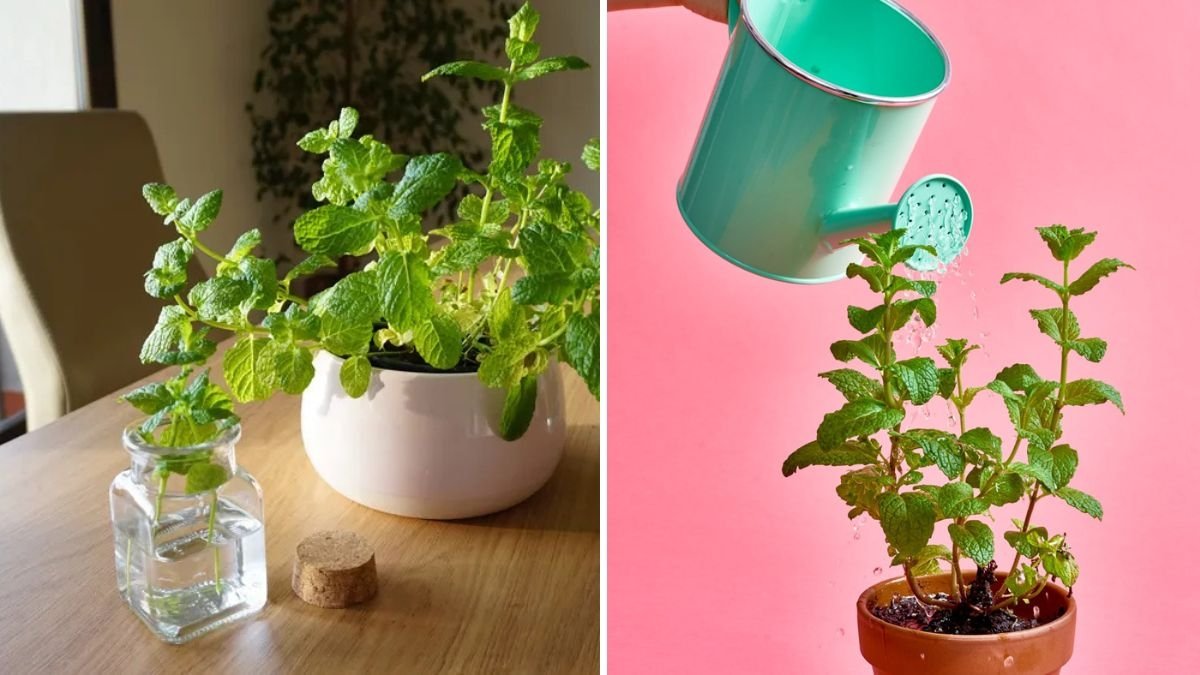




Leave A Comment